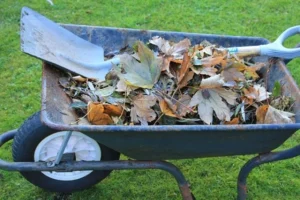Hydroponic gardening is a modern way to grow plants without soil. Instead, plants get nutrients from water, making it cleaner and often faster than traditional gardening. You can grow a wide variety of plants indoors, from herbs to vegetables.
The best part?
You can do it even if you don’t have a balcony or outdoor space. Many people struggle with finding room for a garden in small apartments or homes, but hydroponics makes it possible.
Several types of hydroponic systems that work well indoors.
The Kratky method is simple and doesn’t need a pump, making it easy for beginners.
Deep water culture (DWC) involves plants floating on water, with their roots submerged in nutrient-rich liquid.
The Wick system is another popular choice, using a wick to move water from a reservoir to the plant roots.
Each method is great for small spaces and can help you grow healthy plants right at home.
This article will explore creative and space-efficient ways to grow your own greens inside. Whether you’re new to hydroponic gardening or looking for fresh ideas, we’ll share simple solutions to help you enjoy homegrown food in even the smallest spaces.
Benefits of Indoor Hydroponic Gardening
Indoor hydroponic gardening is perfect for small spaces like apartments or homes without outdoor areas. It allows you to grow plants vertically or in compact systems, saving valuable space. You can enjoy homegrown greens without needing a backyard or balcony.
Since hydroponic systems provide a controlled environment, you can grow healthy plants all year long, no matter the weather outside. This means you can have access to vegetables and herbs at any time, even during the cold months.
Another great benefit is low maintenance. Hydroponic gardens require less watering than traditional gardens, as the water is recycled within the system. Plus, you’ll deal with fewer pests since there’s no soil to attract them. It’s an easy way to enjoy gardening without the usual hassle.
Creative Space-Saving Solutions for Hydroponic Gardening
Vertical Gardens
Vertical gardening is one of the best space-saving solutions for hydroponic gardening. Wall-mounted hydroponic systems and towers allow you to grow plants vertically, taking full advantage of empty wall space.
These systems often come with stacked trays or pockets, so you can plant a variety of herbs, leafy greens, or even small fruits like strawberries. Wall-mounted setups are perfect for smaller apartments or places where floor space is limited.
Another great option is using shelves or vertical racks. These can be placed against any wall, creating a multi-level garden. You can arrange hydroponic containers on each shelf, stacking them to make the most of the space.
On the top shelves, you could grow plants like kale or lettuce that need a little more height, while smaller plants like herbs can fit on the lower levels. This approach is ideal for homes where floor space is at a premium and allows for easy access to your plants.
By incorporating vertical gardens, you can grow a variety of plants without worrying about sprawling garden beds. They offer an easy solution for maximizing vertical space and keeping your home tidy and green.
Countertop Systems
Countertop hydroponic units are a compact and convenient solution for those with limited space. These small systems are perfect for growing herbs or small plants, and they can easily fit on your kitchen counter, a coffee table, or any flat surface.
Many countertop systems are self-contained, which means they come with built-in grow lights, water reservoirs, and nutrient systems. This makes them a great option for beginners or anyone who doesn’t want to deal with the complexities of larger systems.
For example, the AeroGarden is a popular choice, providing an easy way to grow fresh herbs like basil, parsley, and cilantro right in your kitchen.
The biggest benefit of countertop systems is how little space they require. They fit in small areas and provide quick access to your plants. If you’re cooking, it’s convenient to have fresh herbs right at your fingertips.
These compact systems allow you to grow herbs, small greens, and even microgreens in your kitchen or any small space without worrying about clutter.
Because countertop systems are small, they also tend to be low-maintenance. With built-in lights and automatic water flow, they’re simple to manage and maintain. For those who don’t want a large garden, countertop hydroponic systems provide a perfect solution for fresh, homegrown plants with minimal effort.
Windowsill Gardens
If you have a windowsill, you’ve got an ideal spot for a small hydroponic garden. A windowsill is the perfect place to grow herbs or small plants like lettuce, spinach, and cilantro. By using small, self-contained hydroponic systems, you can create a mini garden that takes up little space but delivers big rewards.
You can use a small tray or even a long container to grow multiple plants along the sill. As these systems are typically compact, they won’t take up much space and can thrive with the natural light coming through the window.
Making the most of natural light is key to a successful windowsill garden. Most plants need at least 6 hours of sunlight per day to thrive. If your windowsill gets good sunlight, this is a great way to grow fresh herbs and greens.
For homes that don’t get a lot of light, you can add a small grow light to help the plants grow. Many hydroponic systems are designed with built-in grow lights to ensure plants get the light they need, no matter the season.
Windowsill gardens are an easy and affordable way to grow plants in small spaces. They’re a great option for people living in apartments, condos, or homes with limited space for larger garden setups. Plus, they give you direct access to your homegrown herbs and veggies whenever you need them.
Hanging Gardens
Hanging hydroponic planters offer another clever way to maximize space in small areas. You can create your own DIY hanging garden by suspending planters from the ceiling.
Whether you use simple rope and hooks or a more sophisticated hanging system, these planters free up valuable floor space while adding a unique touch to your home décor. Hanging gardens work well in kitchens, living rooms, or even bathrooms, and they give your plants a chance to grow vertically.
One of the most significant benefits of hanging gardens is their space-saving quality. By suspending your plants above, you keep them out of the way while still allowing them to grow freely.
This is perfect for small apartments, where floor space is limited but the desire for a little greenery is high. You can grow a variety of plants such as herbs, flowers, or even small fruits like strawberries, all without taking up any precious floor space.
Hanging planters can be customized to fit your space and style. You can use recycled materials like old baskets or containers and turn them into unique hanging planters. The idea of growing plants above your head not only saves space but also creates a visually appealing green space in your home.
Repurposed Furniture
Repurposing old furniture into hydroponic growing spaces is a creative and sustainable way to integrate gardening into your home. Items you already own, like bookshelves, ladders, or old drawers, can be transformed into functional hydroponic systems.
For example, you could turn a bookshelf into a vertical garden by adding trays or containers to each shelf. This allows you to grow multiple plants in a single piece of furniture, creating a multi-level garden that takes up minimal space.
An old ladder can also be repurposed into a multi-tiered hydroponic garden. By placing small hydroponic containers on each step, you can grow different plants at various heights, making the most of vertical space. This is a great option for anyone looking for an eco-friendly, DIY solution to growing plants without cluttering the space.
Another idea is to repurpose an old drawer or cabinet by installing a hydroponic system inside. The drawers can hold small trays or containers, and you can add a grow light on top if needed.
This not only gives you a space to grow plants but also helps you make use of furniture you might have otherwise thrown out. Repurposing furniture is a unique way to integrate hydroponic systems into your existing décor, creating a functional and stylish green space.
Selecting the Right Hydroponic Plants for Small Spaces
When selecting plants for small-space hydroponics, it’s important to choose those that thrive in compact environments. Herbs are a great choice because they don’t require much space and grow quickly. Consider basil, mint, thyme, or parsley. They are easy to care for and perfect for kitchen gardens.
Leafy greens like lettuce, spinach, and kale also do well in small systems. They don’t take up much room and grow quickly, making them ideal for limited space. Microgreens, such as radishes or sunflower shoots, are another great option. They grow fast, require little care, and can be harvested in just a few weeks.
Compact fruiting plants, like dwarf tomatoes or strawberries, are perfect for small hydroponic systems. These plants are bred to stay small, making them ideal for indoor gardens with limited space and light. Look for low-maintenance varieties to make gardening even easier.
Final Thoughts
With these creative space-saving solutions, you can enjoy hydroponic gardening in even the smallest of spaces. From vertical gardens to repurposed furniture, there are endless ways to grow your own plants without taking up valuable floor space.
Whether you live in a tiny apartment or just want to make the most of your available space, these ideas will help you create your own indoor garden that thrives.
Don’t be afraid to experiment with different systems to see which one fits your space and lifestyle. You might find that a countertop garden works best in your kitchen or that a vertical rack is perfect for your living room.
The best part is that even without a balcony or outdoor area, you can still enjoy homegrown plants. Growing your own greens and herbs brings fresh flavors and satisfaction, all while saving space. Try out these ideas and enjoy the rewards of having your own indoor garden, no matter how small your space is.




